#Source: AGES
Explore tagged Tumblr posts
Text
Maul- und Klauenseuche (MKS)
ANZEIGEPFLICHT! ZOONOSE! BEDEUTSAMSTE TIERSEUCHE DER KLAUENTIERE!
Erreger: Aphthovirus (Picornavirus), unbehülltes RNA-Virus sieben Serotypen (mit verschiedenen Subtypen): keine Kreuzimmunität hohe Tenazität (aber säurelabil) sehr hohe Kontagiosität (geringe Mindestinfektionsdosis)
Verbreitung:
Endemisch in Asien, Afrika, Südamerika, Türkei= permanentes Risiko durch:
infizierte importierte Fleisch-/Milchprodukte
illegale Einfuhr von infizierten Klauentieren
Aktuell (März 25) Fälle in Ungarn und Slowakei in österreichischer Grenzregion

Übertragung: Reservoir= afrikanischer Büffel
Infektiöses Material: Aphtheninhalt, Kot, Harn, Milch und alle anderen Sekrete
direkt: Tier-Tier-Kontakt
indirekt: (un)belebte Vektoren
aerogen über viele Kilometer
Pathogenese: Ausscheidung bereits in Inkubationszeit!
Nasale/ Orale Aufnahme
Vermehrung in Schleimhaut -> Primäraphthe (=primärer Vermehrungort)
Hämatogen zu primär affinen Organen (=lymphatoretikuläres System (Milz) u. Leber)
Zweite Virämie -> Sekundäraphthen (Verdauungstrakt, Kronsaum, Zwischenklauenspalt, Euter, Genital)
Persistenz in Ösophagus/Pharynxschleimhaut über Monate bis Jahre möglich (=Carrier)
Symptome:
Rind (am empfänglichsten, deutlichste Klinik) Morbidität 100%, Mortalität 2-5% Inkubationszeit 2-7 Tage
hohes Fieber
Inappetenz u. Schwierigkeiten bei Futteraufnahme
extremer Milchleistungsabfall
Speicheln: erst wässrig, später zäh & schaumig ("MKS-Bart") mit charakteristischem Schmatzen

Unruhe, Trippeln
Stützbeinlahmheit
Sekundäraphthen an Zunge (Schleim)Haut inkl. Verdauungstrakt (Schlundschleimhaut, Pansenpfeiler) Nasenraum Interdigitalspalt und Kronsaum Zitzen

Schwein: 1000-3000x höhere Erregerausscheidung als Rind! Inkubationszeit 2-12 Tage
Aphthen va. an Klauen: Kronsaum Sohlenballen Afterklauen bei säugenden Sauen: Mammakomplex selten: Rüsselscheibe
Lahmheiten: klammer Gang, Ausschuhen möglich
Fieber, Fressunlust
"Bösartige MKS" (Jungtiere): hohe Mortalitäten
plötzliche Todesfälle wg. Myotropismus -> Herzmuskelschädigung
Kleine Wiederkäuer: schwache Symptomatik, Ziegen meist gutartiger Verlauf Inkubationszeit 14 Tage
Aphthen im Maul sehr klein Schaf: eher in Klauenbereich
Fieber
Aborte
Rhinitis
Milchmangel
Selten: ZNS
Diagnose: !Amtstierarzt!
Sektion:
Aphthen bei Jungtieren "Tigerherz": punkt-/ streifenförmige Aufhellungen (= hyalinschollige Degeneration) -> Myocarditis aphthosa
Histologie:
Sekundäraphthen: Kolliquationsnekrosen in Stratum spinosum, Stratum germinativum intakt (darum gute Heilungstendenz)
Erregernachweis:
aus Aphthenflüssigkeit und Epithel mittels Antigen-ELISA (inkl. Serotypisierung) mittels Real-Time-RT-PCR mittels Anzucht (auf primären Kälberthyroid- od. Nierenzellen)
Antikörpernachweis:
!DIVA möglich! aus Blut mittels ELISA mittels Virusneutralisationstest
Prophylaxe
Impfung wird bei uns nicht gemacht, weil wir (noch) MKS frei sind KEIN Impfstoff gegen alle Serotypen kurzer Impfschutz Impfschutz va. bei Schwein oft nicht ausreichend -> kreieren von symptomlosen Ausscheidern!
Seuchenüberwachung
Keulung von betroffenen Beständen
Therapie
Keine
0 notes
Text
Davrin: I've got a new game. It's called "Coffee or Rook". I give you real things I've heard Lucanis say, and you all have to tell me if he was talking about a cup of coffee or his partner. Rook: Lucanis: I don't think I like this game.
#source: big bang theory#dragon age#dragon age the veilguard#dragon age incorrect quotes#lucanis dellamorte#lucanis x rook#davrin dragon age#500 notes#1k notes#1.5k notes
2K notes
·
View notes
Text
Okay but do you know what really gets me?

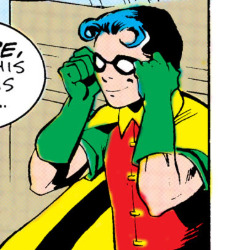
There's no one left in-universe who can or will talk about Jaybin as he really was.


Bruce is the founder of the Jaybin Slander Department;
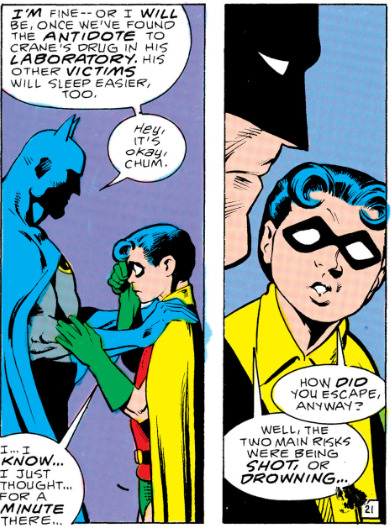

Alfred is no better.
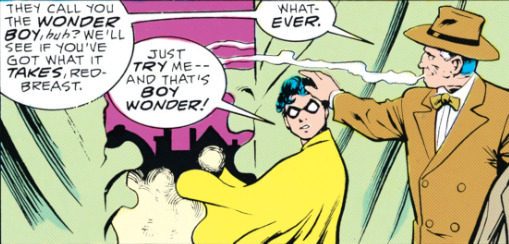
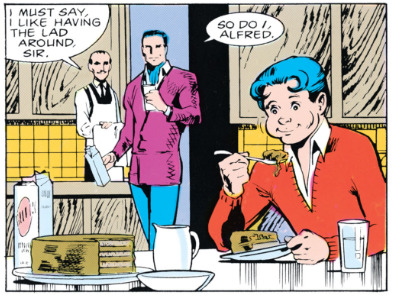
Dick wasn't around much, didn't know him that well.
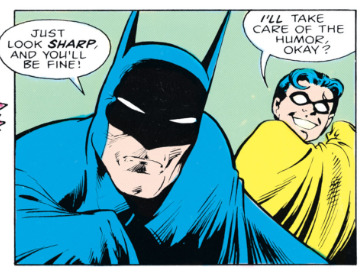
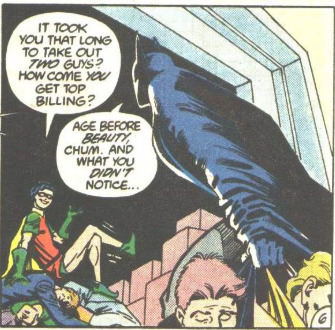
If Barbara ever interacted with him in his original run, I haven't found it yet.

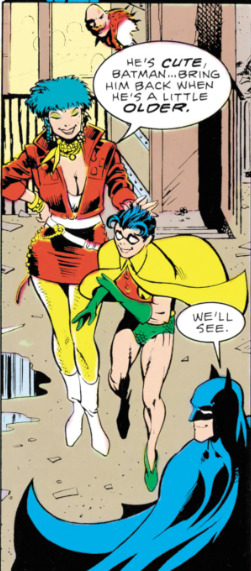
I mean, he had some interactions with the Teen Titans, but was he really close with any of them?
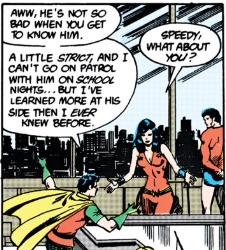
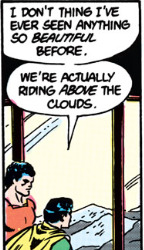
I suppose Gordon could, assuming he isn't in on the Jason-bashing. I haven't seen it but I could be missing something.
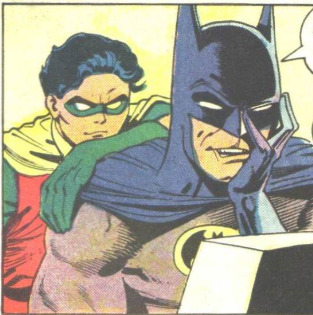

And, well, Jason... somehow, I don't think anyone's asking Jason what he was like as a kid, nor is he really a reliable source. Autobiographical memory is weird.
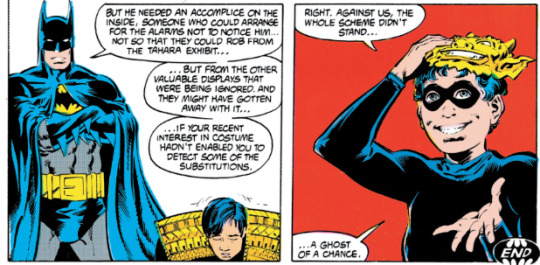

No one in-universe will ever really talk about this bright, friendly, eager kid, and it's a tragedy.


He was smart and clever and had so much compassion.
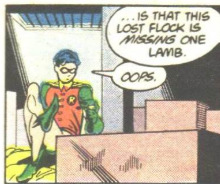
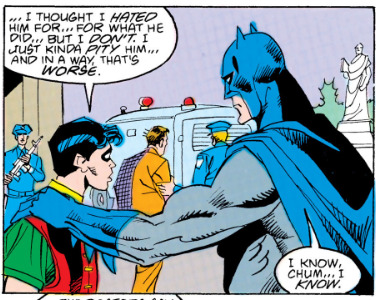
He wanted so badly to help people, and he found joy in his work as Robin.


He had a dramatic flair and he was kind of a nerd and he was really funny on occasion.

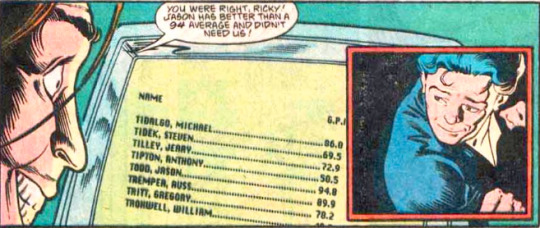
He was so deeply, fundamentally good, and the fact that somehow his legacy has been twisted into one of anger and recklessness is honestly a crime.


It makes me so desperately sad that there's not a single character who can even start to undo the lasting damage of a four-decade smear campaign against a kid who did nothing to deserve it.
#warrior's thoughts#jason todd#bruce wayne#jaybin#jaybin readthrough#comics#it's all jim starlin's fault btw#the way he writes jason does not align with any of jason's other appearances in contemporary books#every time dc writes something about jason being angry or reckless as a child an angel loses their wings#he has his moments of anger but it's not like he's not justified in those#also he's 12-15; i feel like some anger is normal at that age#and a lot of his seemingly reckless moments were actually calculated; he just didn't lay out the plan for bruce before doing it#jim starlin is the only writer who writes jason the way he does. everyone else seemed to understand that this was a good kid#it's really jarring to go from batman 413 to batman 415 (jay doesn't appear in 414) because of the stark difference in how jay is written#genuine question for mr starlin if you didn't like the character of robin why did you agree to write batman?#i can't be too upset; i really like red hood and it's only because jim starlin hated jason that we got utrh in the first place#but the character assassination of jaybin is just depressing#(btw if you want me to figure out image sources lmk i did not keep track lol)#also i should note that it is implied that dick and jason were actually pretty close#we just don't get to see much of it#so all we have are those implications. same with babs actually - she never appears in the jaybin era#but later comics (and her presence at his funeral) suggest they knew each other
523 notes
·
View notes
Text




(In the Fade after Rook disrupted the ritual) Rook: Can I ask questions? Solas: You may ask me one. Rook: Are you a child of divorce? Solas: ...
#dragon age#dragon age veilguard#dragon age the veilguard#dav#datv#solas#rook#dragon age spoilers#dragon age veilguard spoilers#dav spoilers#veilguard spoilers#source: taskmaster
2K notes
·
View notes
Text
we need to abolish the idea that ancient greek myths and legend have a coherent timeline. they do not. for any given myth there are like 10 heroes mentioned that feasibly could not have been adults or even alive. herakles keeps showing up in places where he should probably be dead. anyone could be a suitor of helen. even herakles. even theseus if you count that kidnapping stint he did. nestor is alive for 10 billion years. time is fake and anything beyond vague generational outlines is conjecture
#the thing about classical studies is sometimes you gotta just accept that sometimes We Dont Fucking Know#a majority of our sources are GONE. we don’t have the full picture and its impossible to make definite statements off fragmentary evidence#is achilles older than patroclus? is he younger? NO IDEA. myth is a fluid tradition. who give a shit#all that matters is: is this guy the same general age range? is he young enough that hes got less respect? is he old enough to earn respect?#and if anyone cites wikipedia at me for this post im killing them with lasers#tagamemnon
3K notes
·
View notes
Text

Dragon Age: Inquisition released 10 years ago today!
#dragon age#bioware#video games#solas#1k+#edit: this post is the original source/version of this post#if cross-posting posts from my blog to other sites please link back to the original post or to my blog#or say somewhere where you got it#thankyou!!
1K notes
·
View notes
Text
Lucanis would abuse the eluvian network to get the freshest ripest fruits and vegetables from wherever they grow best every single week and he's so right for that
#source: the codex where he wants peaches but ONLY if he can find orleasian ones#& when he says he prefers fresh herbs and buys some plants for harding. and also when harding apologizes to him later and offers the arrow#and he says More Herbs Actually#look. if i had a magical doorway into palisaide colorado even if i had to fight or sneak past mountian lions and bears to get to it#I WOULD EAT NOTHING BUT PALISADE PEACHES FROM JULY THROUGH SEPTEMBER#theyre all i dream about#anyway#lucanis#lucanis dellamorte#dragon age#dragon age: veilguard#dragon age: the veilguard#lucanisposting#jade plays dav#datv spoilers#da4 spoilers
1K notes
·
View notes
Text
Bellara and Lucanis both cook for the Veilguard BUT I can say with 100% certainty that they cannot cook for the Veilguard at the same time because deep down in my soul I know Bellara is the most chaotic person you've ever seen holding a kitchen knife and Lucanis Cannot Handle It.
#they can discuss cooking together#spices and flavours and the like#but when the actual mechanical process starts he has to leave#he has to be somewhere else#dragon age#datv#dragon age the veilguard#lucanis dellamorte#bellara lutare#sources? my intuition
445 notes
·
View notes
Text

kind patron reminded me i drew this back in 2022
#dragon age#dorian pavus#pavelyan#sera#dorxus#dorian x inquisitor#my art#this was based on some comic but I lost the source I’m sooooorrry#meme
1K notes
·
View notes
Text



"The wings—do you manifest them on purpose?"
"I don't, why?"
"So you just naturally look amazing when Spite helps?"
#dragon age#dragon age gifs#dragon age the veilguard gifs#dragon age the veilguard#dragon age: the veilguard#veilguard gifs#dagifs#video game gifs#dragon age source#dragon age 4#lucanis#lucanis dellamorte#spite#spite dellamorte#spite dav#lucanis datv#lucanis dragon age#tearstone island#veilguard spoilers
602 notes
·
View notes
Text
Pullorum-Salmonellose
= weiße Kükenruhr, Pullorumkrankheit
!MELDEPFLICHT!
Erreger: Salmonella pullorum, gramnegative Stäbchen sehr widerstandsfähig sensibel gegen Sonnenlicht, Hitze u. Desinfektionsmittel
Übertragung: Wirtschaftsgeflügelbestände frei -> potentielle Infektionsquelle kleine extensiv-gehaltene Bestände
direkt: Tier-zu-Tier
aerogen
indirekt: fäkal-oral (Personen, Geräte, Transportmittel)
vertikal: latent infizierte Elterntiere
Inkubationszeit: 2-5 Tage
Symptome:
Küken: septikämische Erkrankung
Mortalität über 50%
stark vermindertes Allgemeinverhalten
Durchfall: kalkweißer Kot (wg. vermehrter Uratausscheidung)
Pseudoobstipation
Atemnot
Selten: Augen- u. Gelenksentzündung, ZNS-Symptomatik

Legehennen: chronischer Verlauf
verminderte Legeleistung, Brut- u. Schlupfergebnisse schlecht
gestörtes Allgemeinverhalten
Durchfall
Diagnose
Sektion:
Küken: persistierender Dottersack Lunge u. Herz: stecknadelkopfgroße, glasig-weiße Herde Leber- u. Milzschwellung selten: fibrinöse Typhlitis Adult: Oophoritis: Tertiärfollikel schlaff, gestielt, grau-grün Orchitis: Hoden hyperämisch vergrößert Leber: vergrößert, grünlich verfärbt, feine Nekroseherde Milz: follikulär-hyperplastisch herdförmige Herzmuskeldegeneration
Histologie:
akut: dystrophisch und herdförmig-nekrotisierende Veränderungen protrahiert: Granulome (=produktiv-entzündliche Veränderung) in Herz, Leber und Darm
Kultureller Erregernachweis aus Organproben
Antikörpernachweis
bei älteren Tieren mittels Frischblut- od. Serumschnellagglutination !Kreuzreaktionen mit anderen Serovaren möglich!
Prophylaxe
ständige serologische Überwachung
Keulung bei Erregerdetektion in Elterntierherden
SP freie Herden: keine positiven Tiere innerhalb von 3 Monaten bei zweimaliger Untersuchung, erste Untersuchung bei Beginn d. Legetätigkeit
Isolierung von Beständen
Impfung (Lebend- od. Inaktivimpfstoff)
Therapie
!KEINE Behandlung von Zuchtherden!
Antibiotikum nach Antibiogramm
Gallinarum-Salmonellose
= Hühnertyphus
!MELDEPFLICHT!
Erreger: Salmonella gallinarum, gramnegative Stäbchen sehr widerstandsfähig sensibel gegen Sonnenlicht, Hitze u. Desinfektionsmittel
Übertragung: Wirtschaftsgeflügelbestände frei -> potentielle Infektionsquelle kleine extensiv-gehaltene Bestände (weitverbreitet in Südeuropa und Nordafrika)
direkt: Tier-zu-Tier
aerogen
indirekt: fäkal-oral (Personen, Geräte, Transportmittel)
Inkubationszeit: 2-5 Tage
Symptome: weißgefiederte Hybridlinien weniger krankheitsanfällig als braungefiederte betrifft Junghennen und adulte Tiere: perakut septikämische Erkrankung
plötzliche Todesfälle (Gesamtmortalität über 80%)
wenn klinisch apparent, Krankheitsdauer nur 6-8 Std
Diagnose
Sektion:
Hepato- u. Splenomegalie seröse Häute: vereinzelt diskrete petechiale Blutungen Eierstock: diffuse Rötung d. Tertiärfollikel mit Gefäßinjektion und Erschlaffung
Kultureller Erregernachweis aus Organproben
Antikörpernachweis
bei älteren Tieren mittels Frischblut- od. Serumschnellagglutination !Kreuzreaktionen mit anderen Serovaren möglich!
Prophylaxe
ständige serologische Überwachung
Keulung bei Erregerdetektion in Elterntierherden
Isolierung von Beständen
Impfung (Lebend- od. Inaktivimpfstoff)
Therapie
!KEINE Behandlung von Zuchtherden!
Antibiotikum nach Antibiogramm
0 notes
Text
Lucanis: The thing is... I have something big to tell you. Viago: We've known each other for years, Lucanis. There is absolutely nothing that could dent our alliance. Lucanis: I'm dating your protégé. Viago: You're dead to me.
#source: psych#dragon age#lucanis dellamorte#viago de riva#crow rook#dragon age veilguard#dragon age the veilguard#dragon age incorrect quotes#lucanis x rook#500 notes#1k notes
1K notes
·
View notes
Text
I don't even know how to word this in a way that makes sense and I think in an overall world building sense this is a major case of "Man I think it depends" but I actually don't think Spite is a "demon".
Spirits and Demons are essentially the same, yes, and I think there's much to be said about this in in parallel to a healthy person vs a deeply traumatized person, but to quote Neve, "one is more likely to manipulate you, or kill you," etc etc.
A demon is a spirit whose purpose has been twisted. And I don't think Spite's purpose has been twisted much at all.
Determination's purpose is "accomplish my goal (whatever that may be)". Spite (the emotion)'s purpose is exactly the same, with the added benefit of "especially against the wishes of others".
I think the demonic version of Determination would be "Ruthlessness", not Spite.
Spite (the guy) is not wholly consumed by his purpose like other "demons" are. He doesn't pursue his goals at the expense of his companions. He has several other interests even if they seem a little silly (learning what tastes good, or even new forms of combat like fire). And he tells us his purpose several times...it's his promise with Lucanis! Escape, kill, and live! This goal is one of determination and it has not changed by his becoming Spite. The goal is not warped in any way even with his joining to Lucanis.
Bellara speculates as to why Spite doesn't just take Lucanis over or turn him into a nasty mound of flesh. I want to argue that this is because Spite is a named spirit, not a demon.
What's more spiteful than not allowing your captors to change you? What says fuck you to people who would use you as a tool than self-determination? What's more spiteful than being determined to be free, to fight who would enslave you, to live?
My working theory is that Spite is not a demon in the same sense as, say, Wisdom being corrupted into Pride, which twists a desire to guide, teach, or navigate situations with care into a desire to be right and unchallenged.
I think Spite is to Determination as Eulogy is to Compassion.
#spite dragon age#dragon age veilguard#da veilguard#lucanis dellamorte#lucanis#spite dellamorte#i got a really old but powerful academic urge to write a ten page paper with cited sources on this today#arent they just so perfect together#a shade and a wounded spirit etc etc#they work because they are the same! they want to live and be free! and fuck everybody else!#datv#veilguard#dragon age#cathedralposting#i need to put spite in a little petri dish and study him#this has been said before but I'll say it again
974 notes
·
View notes
Text
Glossary of Nautical Terms - as used in the late 18th and early 19th centuries

Aft: at or towards the stern or after part of a ship, the opposite of bow.
Aloft: overhead, or above.
Athwart: across.
Bank: a rising ground in the sea, differing from a shoal, because not rocky but composed of sand, mud or gravel.
Becalmed: to halt through lack of wind.
Bow: the foremost end or part of a ship, the opposite of stern.
Bowsprit: a large mast or piece of timber which stands out from the bow of a ship.
Burthen: the older term used to express a ship's tonnage or carrying capacity. It was based on the number of tuns of wine that a ship could carry in her holds, the total number giving her burthen.
Chase, to: to pursue a vessel in wartime with the aim of capturing, acquiring information from her, or destroying.
Colours: the name by which the national flag flown by a ship at sea is known, used to determine nationality.
Dead reckoning: a system of navigation where the position of a ship is calculated without the use of any astronomical observation whatever.
Fair wind: a wind favourable to the direction a ship is sailing.
Fathom: a measure of six feet, used to divide the lead (or sounding) lines in measuring the depth of water; and to calculate in the length of cables, rigging, etc.
Fore: the forward part.
Hail, to: to call to another ship.
Helm: the instrument by which the ship is steered, and includes both the wheel and the tiller, as one general term.
Jib: a triangular sail set by sailing ships on the boom which runs out from the bowsprit.
Jury-mast: a temporary makeshift mast erected to replace a mast that has been disabled or carried away.
Jury-rudder: a makeshift arrangement to give a ship the ability to to steer when she has lost her rudder.
Keel: the lowest and principal timber of a wooden ship - the single strongest member of the ship's frame.
Knot: the nautical measure of speed, one knot being a speed of one nautical mile (6,080 feet) per hour. As a measure of speed the term is always knots, and never knots an hour.
Landfall: the discovery of the land.
Land-locked: sheltered all round by the land, so that there is no view of the sea.
Lead: an instrument for discovering the depth of water, attached to a lead-line, which is marked at certain distances to measure the fathoms.
Lee: the side of a ship, promontory, or other object away from the wind; that side sheltered from the wind. It is the opposite side to windward.
Lee shore: a coastline on to which the wind blows directly - consequently it can be dangerous as the wind tends to force the sailing ship down on it.
Leeward: with the wind; towards the point to which the wind blows.
Letter of Marque: a commission issued in Britain by the Lord High Admiral or Commissioners of the Admiralty authorizing the commander of a privately owned ship to cruise in search of enemy merchant vessels. The letter of marque described the ship, her owners and officers, the amount of surety which had been deposited and stressed the necessity of having all prize vessels or goods seized condemned and valued at a Vice Admiralty Court for the payment of 'prize money'.
Lie-to: to prevent a vessel from making progress through the water - achieved by reducing sail in a gale. The objective is to keep the vessel in such a position, with the wind on the bow, as to ensure that heavy seas do not break aboard.
The Line (or 'Crossing the Line') Sailing across the Equator. Nautical tradition where seamen celebrate the crossing of the equator by dressing up and acting out a visit by King Neptune. Those who have not previously crossed the line are summoned to the court of Neptune for trial, followed by a ritual ducking (in a bathing tub of seawater) and sometimes lathered and roughly shaved.
Mainsail: the principal sail of a sailing vessel.
Mizzen (or mizen): the name for the third, aftermost, mast of a square-rigged sailing ship or of a three-masted schooner.
Muster: to assemble the crew of a ship on deck and call through the list of names to establish who is present and accounted for.
Muster-book: the book kept on board a vessel in which was entered the names of all men serving in the ship, with the dates of their entry and final discharge from the crew. It was the basis on which victuals were issued and payment made for services performed on board.
Pintle: a vertical metal pin attached to the leading edge of the rudder; it is fitted into the metal ring or 'gudgeon' bolted to the sternpost of a vessel. This provides the means for hinging the rudder on the sternpost and allows a rudder to be swung or turned as desired (by use of the tiller); where necessary (ie. when the rudder needs to be removed or repaired) the pintles can be unshipped quickly and the rudder detached.
Port: the left-hand side of a vessel as seen from the stern; also a harbour or haven.
Privateer: a privately owned vessel armed with guns which operated in time of war against the trading vessels of an enemy nation. Each privateer was given a a 'letter of marque' which was regarded as a commission to seize any enemy shipping as a 'prize'. The name 'privateer' has come to refer to both the ship and the men who sailed in her.
Prize: name used to describe an enemy vessel captured at sea by a ship of war or a privateer; also used to describe a contraband cargo taken from a merchant ship. A 'prize court' would then determine the validity of capture of ships and goods and authorize their disposal. 'Prize' in British naval history always acted as considerable incentive to recruitment with many men tempted to join the navy in anticipation of quick riches.
Prize Court: Captured ships were to be brought before prize courts where it was decided whether the vessel was legal prize; if so, the whole value was divided among the owners and the crew of the ship.
Prize Money: the net proceeds of the sale of enemy shipping and property captured at sea - these proceeds were distributed to the captors on a sliding scale from highest rank to lowest seaman.
Road or Roadstead: a stretch of sheltered water near land where ships may ride at anchor in all but very heavy weather; often rendered as 'roads', and does not refer to the streets of a particular port city but rather its anchorage, as in 'St Helens Roads', the designated anchorage for shipping located between St. Helens (Isle of Wight) and Portsmouth, or 'Funchal Roads' at the island of Madeira. (see Elizabeth Macquarie's 1809 Journal).
Quarter: (1)the direction from which the wind was blowing, particularly if it looked like remaining there for some time; (2)the two after parts of the ship - strictly speaking a ship's port or starbord quarter was a bearing 45° from the stern.
Ship: from the Old English scip, the generic name for sea-going vessels (as opposed to boats). Originally ships were personified as masculine but by the sixteenth century almost universally expressed as as feminine.
Shoal: a bank or reef, an area of shallow water dangerous to navigation. Sounding: the of operation of determioning the depth of the sea, and the quality of the ground, by means of a lead and line, sunk from the ship to the bottom, where some of the sediment or sand adheres to the tallow in the hollow base of the lead.
Sound: (1) to try the depth of the water; (2) a deep bay.
Sounding: ascertaining the depth of the sea by means of a lead and line, sunk from a ship to the bottom.
Soundings: those parts of the ocean not far from the shore where the depth is about 80 to 100 fathoms.
Spar: a general term for any wooden support used in the rigging of a ship - includes all masts, yards, booms, gaffs etc.
Squall: a sudden gust of wind of considerable strength.
Starboard: the right-hand side of a vessel as seen from the stern.
Stern: after-part of a ship or boat.
Tack: the nautical manouevre of bringing a sailing vessel on to another bearing by bringing the wind round the bow; during this manouevre the vessel is said to be 'coming about'.
Tide of Flood: the flow of the tidal stream as it rises from the ending of the period of slack water at low tide to the start of the period of slack water at high tide; its period is approximately six hours.
Trade Winds: steady regular winds that blow in a belt approximately 30 N. and 30 S of the equator. In the North Atlantic the trades blow consistently all year round, from the north-east; in the South Atlantic they blow from the south-east, converging just north of the equator. The meeting of the trade winds just north of the equator created the infamous 'doldrums', where sailing ships could be becalmed for days or weeks waiting for a wind to carry them back into the trades.They were known as trade winds because of their regularity, thereby assisting sailing vessels in reaching their markets to carry out trade.
Under way: the description of a ship as soon as she begins to move under canvas power after her anchor has been raised from the bottom; also written as 'under weigh.'
Voyage: a journey by sea. It usually includes the outward and homeward trips, which are called passages.
Watch: (1) one of the seven divisions of the nautical day; (2) one of two divisions of the seamen forming the ship's company.
Wear: the nautical manouevre of bringing a sailing vessel on to another tack by bringing the wind around the stern.
Weather: in a nautical sense (rather than a meteorological) this is the phrase used by seamen to describe anything that lies to windward. Consequently, a coastline that lies to windward of a ship is a weather shore; the side of a ship that faces the wind when it is under way is said to be the weather side a ship, etc.
Weigh: to haul up.
Weigh anchor: the raising of the anchor so that the ship is no longer secured to the sea or river bottom.
Windward: the weather side, or that direction from which the wind blows. It is the opposite side to leeward.
Yard: (1) a large wooden spar crossing the masts of a sailing ship horizontally or diagonally, from which a sail is set. (2) a shortened form of the word 'dockyard, in which vessels are built or repaired.
Sources: JEANS, Peter D. Ship to Shore: a dictionary of everyday words and phrases derived from the sea. Santa Barbara: ABC-Clio, 1993.
The Oxford Companion to Ships & the Sea. (ed.) Peter Kemp. Oxford: Oxford University Press, 1976.
#naval history#naval artifacts#ship terms#not from me#sources below#18th century#19th century#age of sail#infos
2K notes
·
View notes
Text
jason: why won’t you leave my dad alone?!
clark: because we’ve been together for 20 years jason… we have 8 kids, you included, and… we’re in love
duke, in the background: boke!
jason: i’ll find dirt on you yet. i’ve got people working on it.
clark: 🧍🏻
#source: derry girls#batman#superbat#bruce wayne#does this count as irish jason?#maybe irish batman in general lmao#jason todd#clark kent#duke thomas#batfam#i think it’s hilarious asf if jason is the most protective of bruce#technically this could have fit with damian but i wanted the age to be similar to how long superbat have been together#and it’s also consistent with the audio#jason and duke brother rights#idc what you guys say#also i highly recommend derry girls it’s so good#derry girls
2K notes
·
View notes